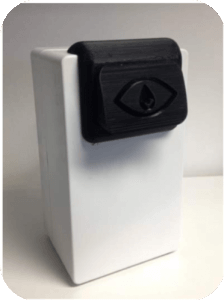Could 3D Printed Microscopes Improve Water Testing?
Published on by Water Network Research, Official research team of The Water Network in Technology
Manual tests for safe drinking water can be slow and error-prone. A team of academics is trying to change that.
By Josephine Moulds
Like many people, Alexander Patto was keen to move away from academia after his PhD. He wanted a job that would have a tangible impact on the world, so when an opportunity came up to investigate water testing in the developing world, he jumped at the chance. Together with a team of academics from the University of Cambridge, Patto, a biologist, worked on a simple way of testing bacterial contamination in drinking water.

Source: WaterScope
One of Patto’s team had already released the designs for an open-source microscope, which can be produced anywhere in the world. “All you need is a 3D printer, the design files, some screws and a webcam,” he says. “It’s a way of getting high-performance equipment into very low-resource areas.”
The team developed a bespoke version of that microscope, to help speed up the detection of bacteria , plus a cartridge that simplifies sample collection, and image-recognition software, run on affordable Raspberry Pi computers, to study the growth of bacteria over time.
The cartridge system enables water testing to be done on site, with no need for a specialist, so communities can monitor their own water.
Read Full Article: The Guardian
Find Out More: WaterScope
Media
Taxonomy
- Drinking Water Security
- Treatment
- Treatment Methods
- Drinking Water Treatment
- Quality
- Technology
- Biological Treatment
- Water Quality
- Drinking Water Managment
- Drinking Water
- Water Quality Management
- water treatment
- Water Quality Research
- On-site Treatment